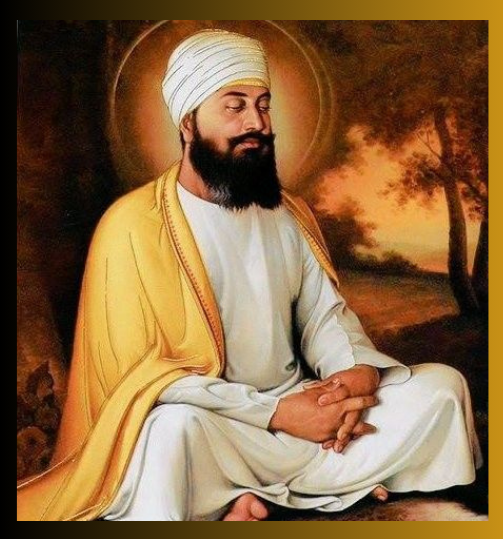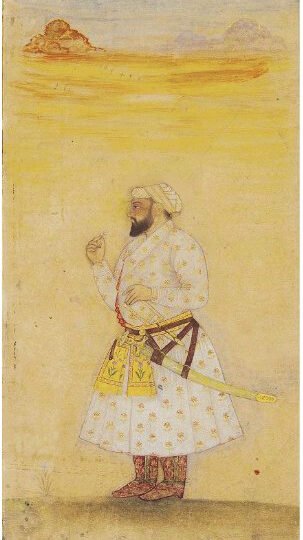Guru Tegh Bahadur Ji

Ninth Guru of Sikhism
Guru Tegh Bahadur (Gurmukhi: ਗੁਰੂ ਤੇਗ ਬਹਾਦਰ), the ninth Guru of Sikhism, was born on 1 April 1621 in Amritsar, Punjab. He was the youngest son of Guru Hargobind Ji and Mata Nanki Ji. Guru Tegh Bahadur’s early life was spent learning and training in spirituality, martial arts, and military strategy, following in the footsteps of his father, who had established the Sikhs as a martial force.
Spiritual Journey
Guru Tegh Bahadur lived a life of devotion and meditation from a young age. He is said to have had a strong inclination toward spiritual matters, often retreating for deep meditation. Despite his upbringing in a military family, he focused on the spiritual growth of the Sikh community.
Guru Tegh Bahadur was known for his composure, wisdom, and deep understanding of the Sikh teachings. He lived a relatively simple and ascetic life for much of his early years, which set him apart from his father and brothers, who were more involved in active military engagements.
Leading  the Sikh Community
the Sikh Community
Following the death of his father, Guru Hargobind Ji, Guru Tegh Bahadur became the ninth Guru in 1664. He focused on consolidating the Sikh faith and preserving its values, especially spiritual teachings and meditation.
Guru Tegh Bahadur made the important decision to keep a low profile during his early tenure as Guru, emphasizing inner peace and the spiritual well-being of his followers. He was known for his humility, leadership, and maintaining a strong connection with his community.
Conflict with the Mughal Empire
Guru Tegh Bahadur’s primary confrontation with the Mughal Empire occurred during the rule of Emperor Aurangzeb, who began persecuting Hindus and forcing conversions to Islam. Guru Tegh Bahadur rose as a defender of religious freedom. His stance led him to engage with Aurangzeb and other Mughal officials, defending the right of Hindus to practice their religion freely.
In 1675, Guru Tegh Bahadur was arrested, tortured, and executed by Aurangzeb in Delhi for refusing to convert to Islam and for standing up for the religious freedoms of others. His martyrdom is considered one of the most significant sacrifices in Sikh history. He was publicly executed on 24 November 1675 near Chandni Chowk in Delhi.
Legacy and Contributions
Guru Tegh Bahadur’s sacrifice for the freedom of religion and human rights has left an indelible mark on Sikhism. His martyrdom became a symbol of the struggle for justice and the freedom to follow one’s faith without fear of persecution.
He contributed compositions (hymns and prayers), which are included in the Guru Granth Sahib, primarily emphasizing the themes of spiritual reflection, devotion, and human rights. Guru Tegh Bahadur’s teachings continue to inspire Sikhs and non-Sikhs alike.
Succession and Death
Before his execution, Guru Tegh Bahadur had nominated his young son, Guru Gobind Singh, as his successor. Guru Gobind Singh became the tenth and final Guru, continuing the legacy of spiritual and physical defense for the Sikh community.
Guru Tegh Bahadur passed away as a martyr at the age of 54, and his life and sacrifice continue to be commemorated by Sikhs around the world.
Guru Tegh Bahadur’s sacrifice and his defense of religious liberty are celebrated annually, particularly on Shaheedi Divas (Martyrdom Day), and his teachings still resonate in the Sikh community today.

